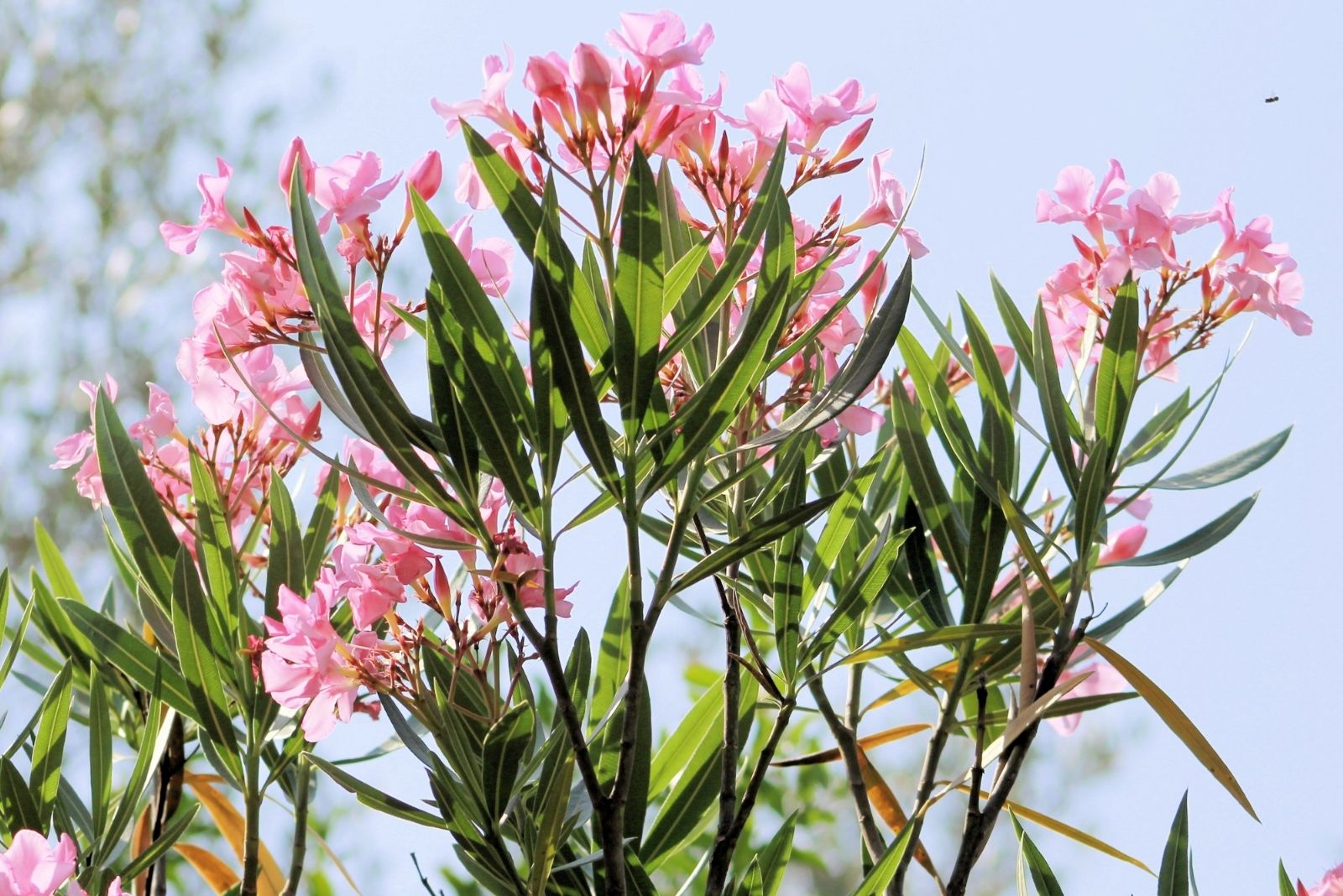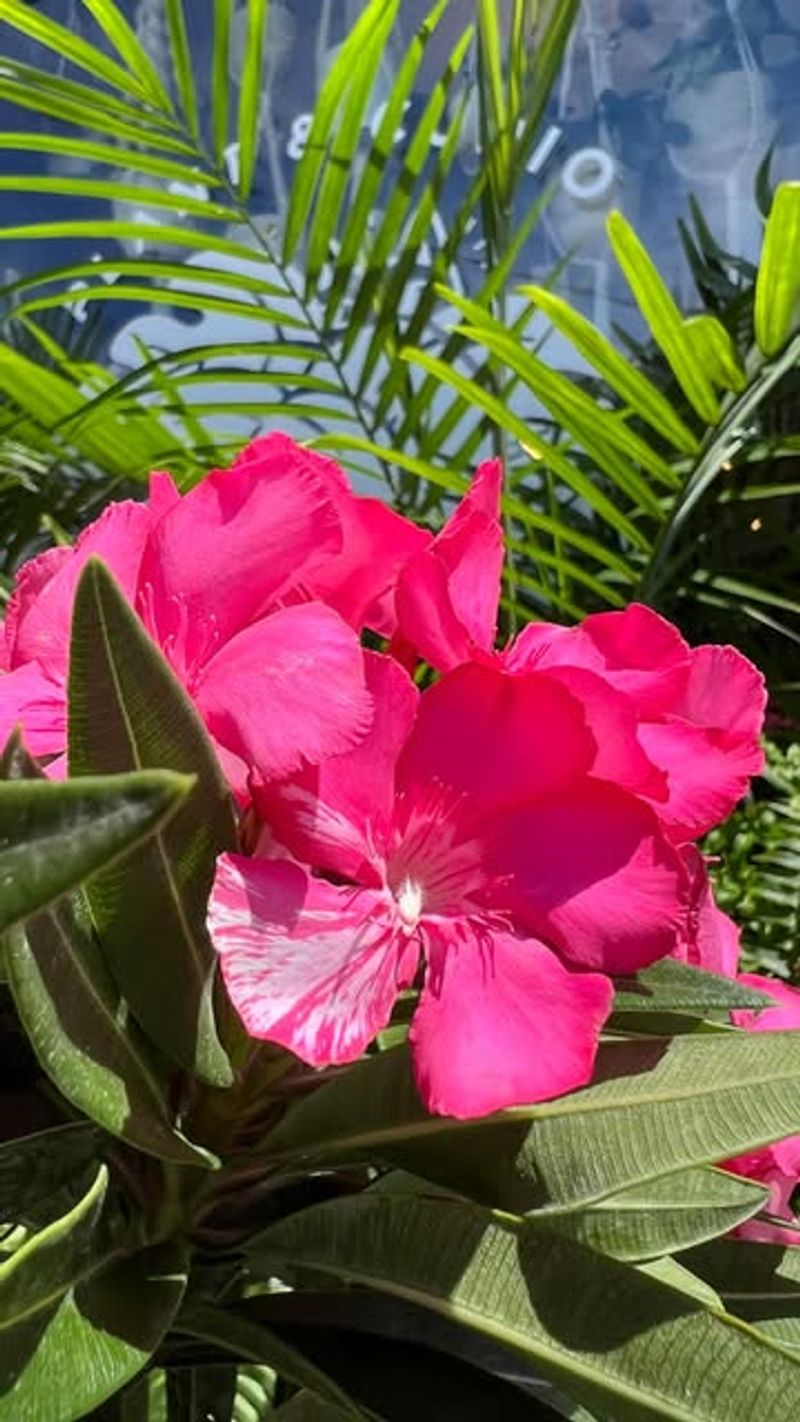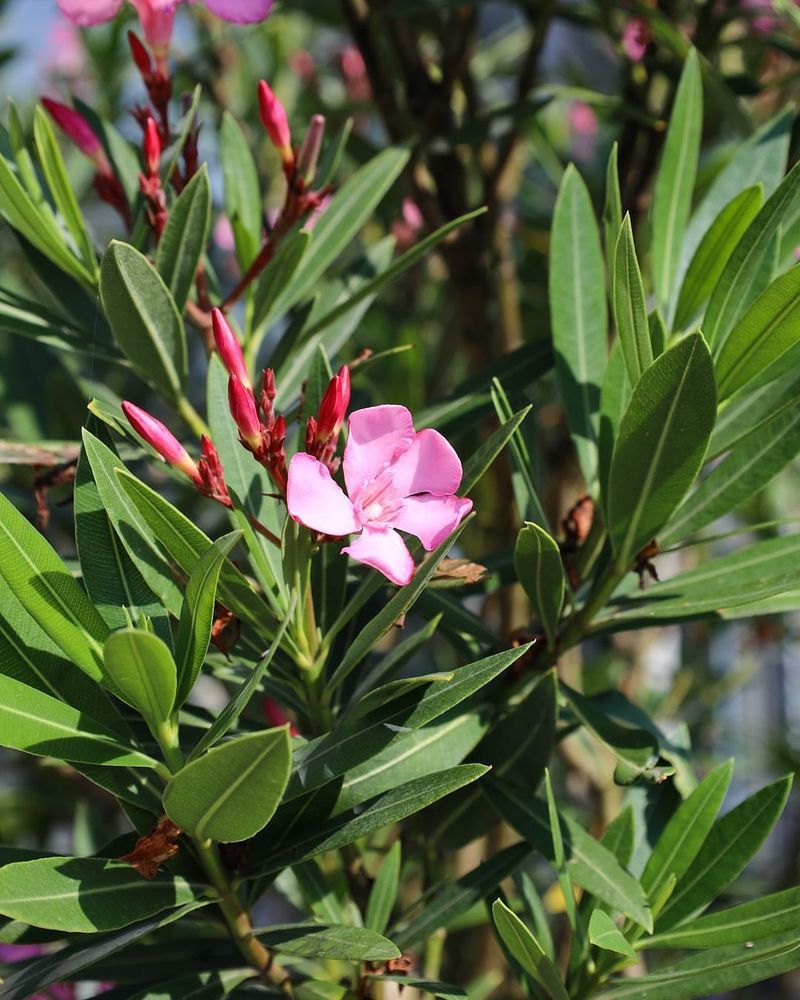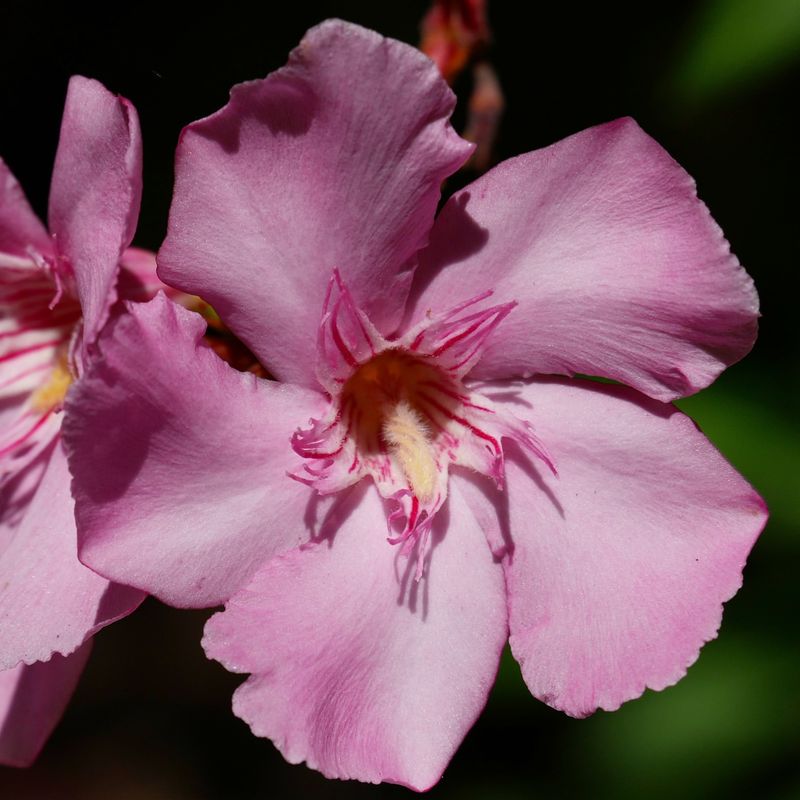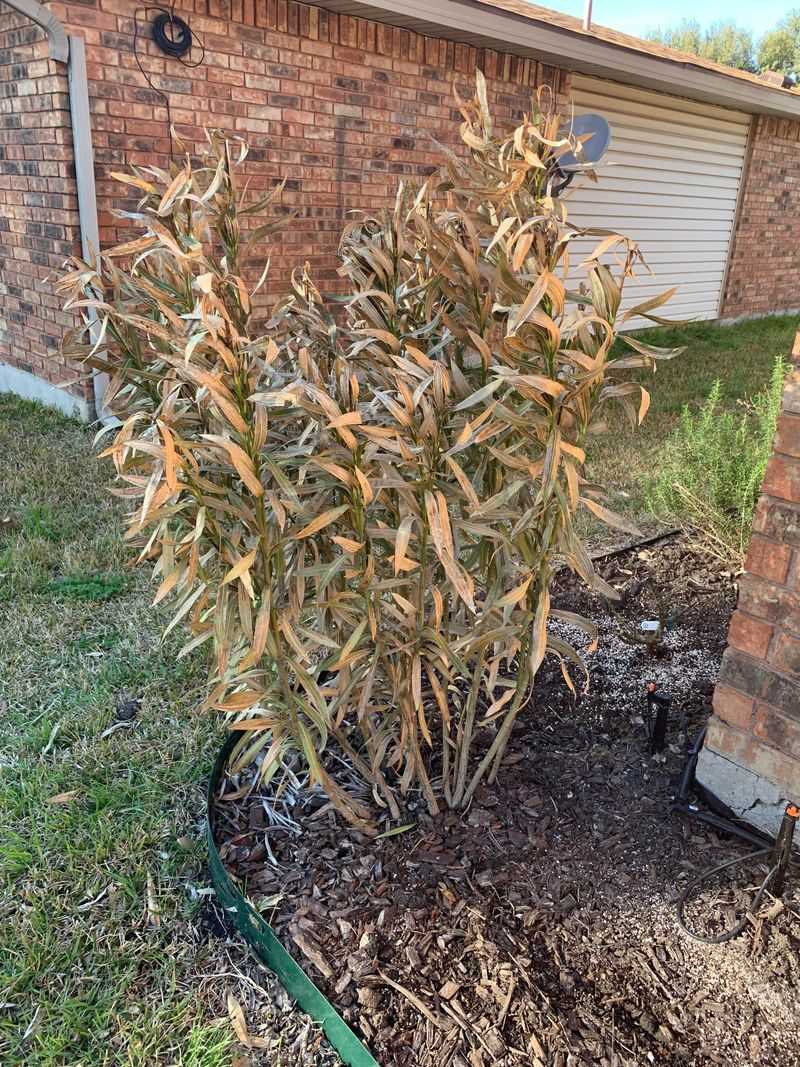Oleander plants bloom beautifully across Florida with their vibrant pink, white, and red flowers, making them a popular choice for landscaping. However, beneath their stunning appearance lies a dark secret that every homeowner should know.
This attractive shrub contains powerful toxins that can harm pets, children, and even adults who come into contact with it. Understanding why oleander ranks as one of the most dangerous plants in Florida yards could save lives.
1. Every Part Contains Deadly Cardiac Glycosides
From the roots buried underground to the delicate petals on top, oleander packs a toxic punch throughout its entire structure. Cardiac glycosides are the culprits, powerful compounds that mess with your heart rhythm and can stop it completely.
Even a single leaf contains enough poison to seriously harm an adult, and smaller amounts can be fatal to children or pets. The toxins remain dangerous whether the plant is fresh, dried, or burned.
Gardeners often underestimate this risk because the plant looks so harmless and pretty in the sunshine.
2. Smoke From Burning Oleander Releases Toxic Fumes
Burning oleander branches or leaves creates a seriously dangerous situation that catches people off guard. The smoke carries those same deadly toxins into the air, where they can be inhaled by anyone nearby.
Stories exist of people using oleander sticks as hot dog roasting skewers over campfires, resulting in severe poisoning. Breathing in the fumes can cause the same heart problems as eating the plant directly.
Never toss oleander trimmings into your fire pit or use them as kindling for any outdoor cooking.
3. Children Are Especially Vulnerable To Poisoning
Kids naturally explore their world by touching and sometimes tasting things they find interesting. Oleander’s bright flowers and accessibility make it particularly tempting for curious little ones wandering through the yard.
Because children weigh less than adults, even tiny amounts of oleander can cause serious medical emergencies. Symptoms can appear quickly, including nausea, irregular heartbeat, and confusion.
Parents should consider removing oleander entirely if young children regularly play in areas where these plants grow.
4. Pets Can Die From Chewing On Leaves Or Flowers
Dogs and cats sometimes nibble on plants out of boredom, curiosity, or upset stomachs. Unfortunately, oleander is one plant that pets should never encounter because even small amounts trigger life-threatening reactions.
Symptoms in animals include drooling, vomiting, abnormal heart rate, and tremors that can progress rapidly. Emergency veterinary care becomes necessary immediately, though treatment isn’t always successful.
Pet owners living in Florida neighborhoods with oleander should keep their furry friends away from these shrubs during walks and playtime.
5. Skin Contact Can Cause Irritation And Allergic Reactions
You don’t have to eat oleander to experience problems because simply touching the plant can trigger uncomfortable skin reactions. The sap contains irritating compounds that cause redness, itching, and sometimes blistering on exposed skin.
Gardeners trimming oleander without proper protection often discover this the hard way. Some people develop allergic reactions that worsen with repeated exposure over time.
Always wear long sleeves, pants, and sturdy gloves when handling oleander, and wash your hands thoroughly afterward to remove any lingering sap.
6. Water Contaminated By Oleander Becomes Poisonous
Here’s something most people never consider: water that has been in contact with oleander parts becomes toxic too. Fallen leaves in birdbaths, pet water bowls, or even rainwater collected near oleander plants can carry dangerous toxins.
Animals drinking from these sources can get sick without ever touching the actual plant. The poison dissolves into the water, making it invisible but still deadly.
Keep water sources away from oleander plants and regularly check for fallen leaves or flowers that might contaminate drinking water for wildlife or pets.
7. No Antidote Exists For Oleander Poisoning
When someone gets poisoned by oleander, doctors can only treat the symptoms because no specific antidote reverses the toxins’ effects. Medical teams work to stabilize heart function, manage nausea, and support the body while it fights the poison.
Treatment often requires hospitalization with heart monitoring and intensive care. Recovery depends on how much poison entered the system and how quickly treatment began.
This lack of a quick fix makes prevention absolutely critical when dealing with oleander plants in residential areas throughout Florida.
8. Oleander Remains Toxic Even After The Plant Dies
Most people assume dead plants become harmless, but oleander breaks this rule in a dangerous way. Dried leaves, dead branches, and even composted oleander material retain their poisonous properties for months or even years.
Yard waste containing oleander shouldn’t go into regular compost piles where children or animals might encounter it. The cardiac glycosides remain stable and deadly regardless of the plant’s condition.
Dispose of oleander trimmings carefully through proper waste management services rather than leaving them accessible in your Florida yard or neighborhood.

